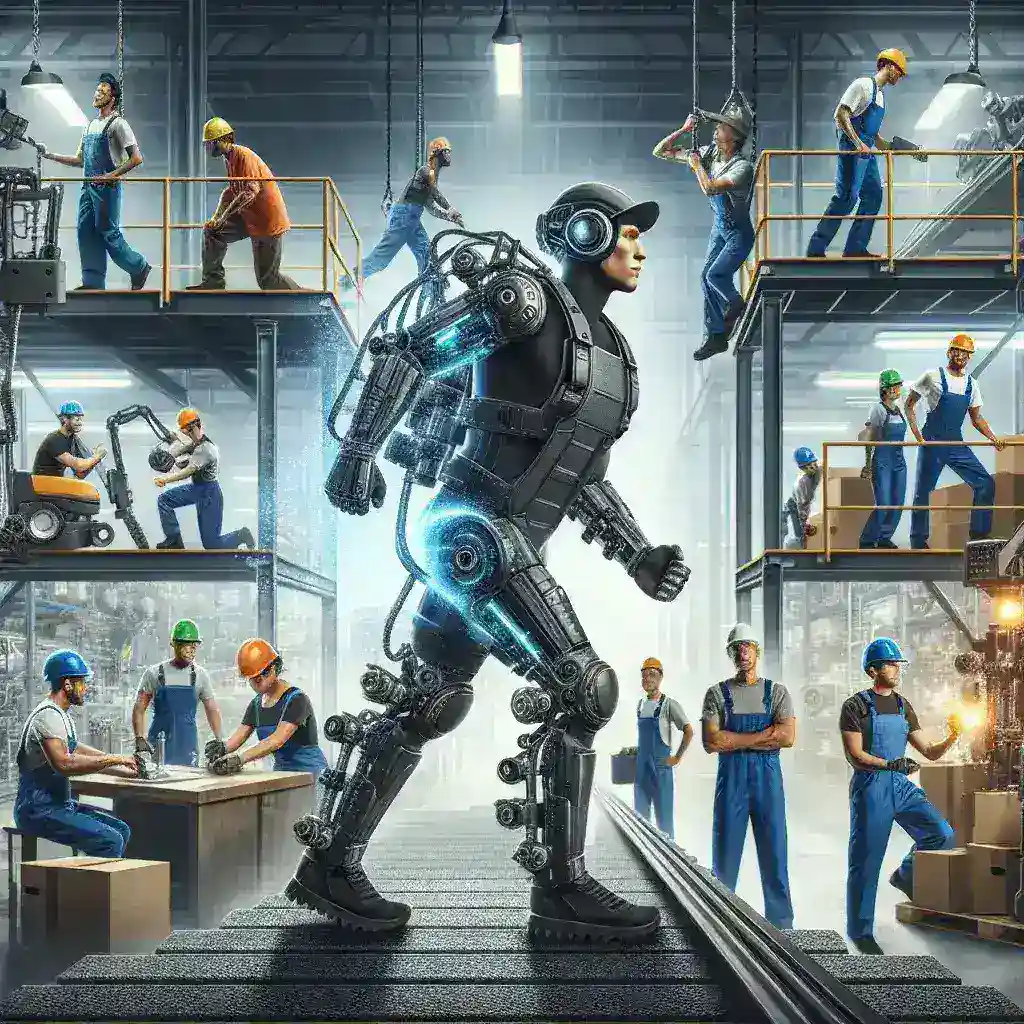Industrial Exoskeletons: Reducing Worker Fatigue and Preventing Injuries
Introduction
In today’s fast-paced industrial environment, worker safety and productivity are paramount. As companies strive to optimize performance and minimize costs, the introduction of innovative technologies has become essential. One such groundbreaking technology is the industrial exoskeleton, designed to reduce worker fatigue and prevent injuries. This article delves into the workings, benefits, and future potential of industrial exoskeletons in the workplace.
What Are Industrial Exoskeletons?
Industrial exoskeletons are wearable devices that enhance the physical capabilities of workers. These mechanical suits can support various body parts, particularly the back, arms, and legs, aiding in lifting, carrying, or holding heavy objects. By redistributing weight and providing additional support, exoskeletons help to alleviate the physical strain that often leads to fatigue and injuries in manual labor jobs.
Historical Context
The concept of exoskeletons dates back to the 1960s when researchers first explored the idea of enhancing human strength using mechanical devices. However, it wasn’t until recent advancements in materials science, robotics, and battery technology that exoskeletons became viable for industrial use. Today, companies across various sectors, including manufacturing, construction, and logistics, are adopting these innovative solutions to improve worker well-being.
How Do Industrial Exoskeletons Work?
Industrial exoskeletons utilize a combination of sensors, actuators, and control algorithms to assist workers. The devices are typically designed to detect the user’s movements, providing support in real time. Some exoskeletons are powered by batteries, while others rely on mechanical springs or hydraulic systems to provide assistance without requiring an external power source.
Types of Industrial Exoskeletons
- Passive Exoskeletons: These do not require power and use springs or other mechanical components to assist with lifting and carrying.
- Active Exoskeletons: Powered by motors, these devices actively assist in movement, providing more precise support for dynamic tasks.
- Hybrid Exoskeletons: Combining both passive and active elements, these offer flexibility and adaptability for various workplace scenarios.
Benefits of Industrial Exoskeletons
1. Reducing Worker Fatigue
One of the most significant advantages of using industrial exoskeletons is the reduction of worker fatigue. By providing mechanical assistance during physically demanding tasks, these devices allow workers to perform at their best for longer periods. Studies have shown that exoskeletons can decrease muscle strain and alleviate fatigue, leading to improved overall job performance.
2. Preventing Injuries
Workplace injuries, particularly musculoskeletal disorders (MSDs), are a major concern in many industries. Exoskeletons help prevent these injuries by supporting the body in maintaining proper posture and reducing the risk of overexertion. By assisting with heavy lifting and repetitive motions, exoskeletons can significantly lower the incidence of workplace injuries.
3. Enhancing Productivity
With reduced fatigue and a lower risk of injury, workers can focus on their tasks more effectively, leading to increased productivity. Companies that implement exoskeletons often report higher output and improved efficiency, making it a valuable investment in workforce performance.
4. Supporting Diversity and Inclusion
Exoskeletons can also play a critical role in promoting diversity within the workforce. By enabling individuals with varying physical abilities to participate in manual labor tasks, companies can create a more inclusive environment and tap into a broader talent pool.
Real-World Applications
Many industries have already begun to adopt industrial exoskeletons, with notable success stories emerging:
Manufacturing
In manufacturing settings, workers often engage in repetitive tasks that require lifting heavy components. Exoskeletons have been employed in assembly lines to assist workers in lifting, reducing strain on their bodies and improving output.
Construction
Construction workers face significant physical demands, often lifting heavy materials or working in awkward positions. Exoskeletons have been introduced on construction sites to provide support during heavy lifting, helping to prevent injuries and reduce fatigue.
Logistics and Warehousing
In logistics, workers frequently move packages and load goods for transport. Exoskeletons help reduce the physical toll of these tasks, allowing employees to work more efficiently and safely.
Challenges and Considerations
1. Cost
The initial investment in exoskeleton technology can be significant, with costs potentially limiting widespread adoption. However, many companies find that the long-term benefits—reduced injury claims and increased productivity—justify the expense.
2. Training
To maximize the benefits of exoskeletons, companies must invest in training their workforce on how to use these devices effectively. Proper training ensures that workers can leverage the technology to its fullest potential.
3. Ergonomics and Design
Not all exoskeletons are created equal. Companies must consider the specific needs of their workforce when selecting or designing exoskeletons to ensure optimal fit and comfort.
The Future of Industrial Exoskeletons
The future of industrial exoskeletons looks promising as technology continues to advance. With the potential for integration with smart technologies and IoT devices, exoskeletons may become even more adaptable and responsive to individual worker needs.
Emerging Trends
- AI Integration: The incorporation of artificial intelligence may lead to more intuitive exoskeletons that can learn and adapt to a worker’s movements.
- Customization: As companies recognize the diversity of their workforce, customizable exoskeletons tailored to individual needs may become more prevalent.
- Sustainability: The development of eco-friendly materials for exoskeleton production may align with growing sustainability initiatives in the corporate world.
Conclusion
Industrial exoskeletons represent a transformative solution for reducing worker fatigue and preventing injuries in the workplace. As companies continue to prioritize safety and productivity, the adoption of this technology is likely to increase. By investing in industrial exoskeletons, organizations can not only improve the well-being of their workers but also enhance overall operational efficiency. The future is bright for exoskeleton technology, paving the way for a safer, more inclusive, and productive workforce.

